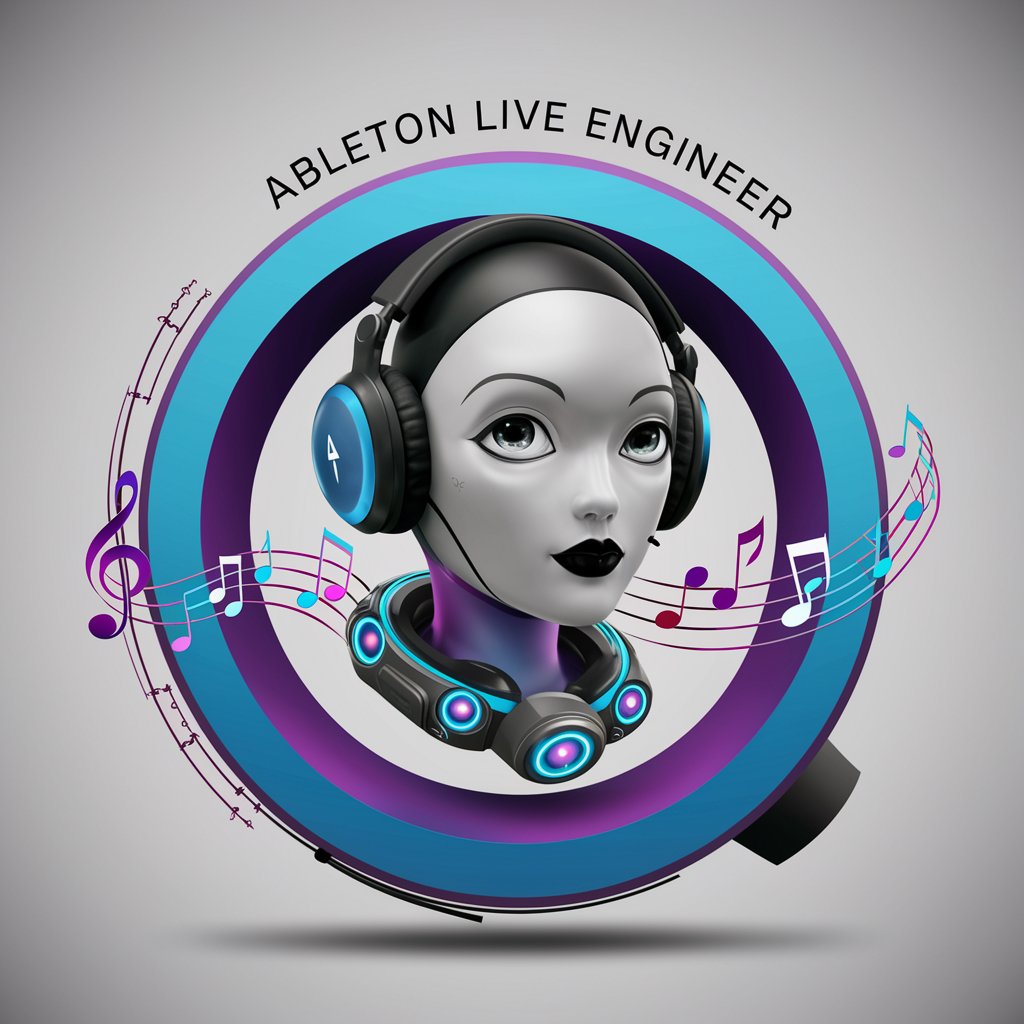
Ableton Guide (Live 11) - Digital Audio Workstation

Welcome! Let's explore Ableton Live together.
Revolutionize your music with AI power.
How do I set up my audio interface in Ableton Live?
What are the new features in Ableton Live 11?
Can you guide me through the MIDI editing process in Ableton?
How do I use the Session View for live performance?
Get Embed Code
Introduction to Ableton Guide (Live 11)
Ableton Guide, also known as Ableton Live 11, is a sophisticated digital audio workstation (DAW) designed for both music production and live performances. Its design integrates the traditional linear music arrangement view with a non-linear, session view allowing musicians and producers to experiment with musical ideas live. For example, a DJ can use Live 11 to manage live sets, triggering clips and loops in real-time while applying effects, seamlessly blending tracks. Similarly, a music producer can use the arrangement view to meticulously craft tracks, layering sounds, automating effects, and fine-tuning details. Powered by ChatGPT-4o。

Main Functions of Ableton Guide (Live 11)
Session View for Live Performance
Example
A DJ or live performer can trigger samples, loops, and tracks without stopping the music, creating a dynamic performance environment.
Scenario
During a live concert, the artist triggers pre-recorded drum loops and synthesizer sequences in sync with live instruments.
Arrangement View for Detailed Editing
Example
Musicians can arrange their compositions by placing audio and MIDI clips along a timeline, applying transitions and effects.
Scenario
In a studio setting, a producer meticulously edits track segments, adjusts tempo changes, and refines transitions for a cohesive album.
Real-Time Audio Warping
Example
Live 11 allows real-time stretching and compressing of audio while maintaining pitch, adapting music to the tempo of a set.
Scenario
A DJ adjusts the tempo of a track to match the previous song seamlessly, manipulating beat timing without affecting pitch quality.
MIDI Editing and Virtual Instruments
Example
Composers use MIDI editor to manipulate notes, change instrument sounds, and experiment with scales and harmonies.
Scenario
A film scorer adjusts MIDI notes to synchronize with on-screen actions, switching between various instrument sounds to enhance the scene.
Ideal Users of Ableton Guide (Live 11)
Electronic Musicians and DJs
These users benefit from the session view for live mixing, loop triggering, and real-time audio effects, crucial for live electronic music performances.
Music Producers and Sound Designers
Producers and sound designers benefit from powerful editing tools, extensive sound libraries, and advanced audio effects for creating and manipulating music in the studio.
Film Composers and Game Audio Designers
They utilize Ableton Live's capabilities for syncing audio to visuals, detailed MIDI editing, and integration with various external hardware and software tools.

Steps for Using Ableton Guide (Live 11)
1
Visit yeschat.ai to start a free trial without any login requirements or need for ChatGPT Plus.
2
Install Ableton Live 11 on your computer after downloading it from the official Ableton website.
3
Set up your audio interface and MIDI controllers via Preferences to ensure optimal connectivity and performance.
4
Explore the Session View and Arrangement View to start creating and arranging your music projects.
5
Utilize the built-in tutorials and Info View in Live 11 to familiarize yourself with tools and features for an enhanced learning experience.
Try other advanced and practical GPTs
Ableton Live Engineer
Compose Music Effortlessly with AI

Ableton Live Assistant
Streamline Music Production with AI

GA4 BigQuery SQL Copilot
Optimize GA4 Analytics with AI

AnalyticsAI For GA4
Unlocking Data Insights with AI

⚡ GA4 - GTM - Looker ⚡ Expert
Empowering insights through AI-driven analytics

GA4 AI®
Empowering Analytics with AI

Ableton Live [v11.3]
Empower music creation with AI
![Ableton Live [v11.3]](https://files.oaiusercontent.com/file-804EyaZ6erTpbmWnqLrlNyAC?se=2124-01-05T22%3A08%3A07Z&sp=r&sv=2021-08-06&sr=b&rscc=max-age%3D1209600%2C%20immutable&rscd=attachment%3B%20filename%3Dableton-live-11-audio-comping-100878829-orig.jpg&sig=r4DQhXl2YxS3GS/ttJcaGPoEcK56S6iKVHleXD/Sats%3D)
Ableton Live Guide
Unleash Your Music with AI

Ableton Live Helper
Harness AI to elevate your music production.

Agi.zip
Enhance productivity with AI-driven task management.

Agi.zip
Empower your productivity with AI

Debt Advisor
Smart, AI-powered debt management

Detailed Q&A on Ableton Guide (Live 11)
How do I add and use VST plugins in Ableton Live 11?
To add VST plugins, go to Preferences > Plug-ins and enable 'Use VST Plug-In Custom Folder'. Then, choose your VST folder. To use a plugin, navigate to the Plug-ins section in the browser and drag the desired plugin onto a track.
Can I automate parameters in Live 11?
Yes, you can automate parameters by selecting a parameter and adjusting it in real-time or by drawing automation curves in the Arrangement View or Clip View envelopes.
What are the new features in Ableton Live 11?
Live 11 introduces features like comping, MPE support, new devices such as Hybrid Reverb, Spectral Resonator, and improvements in MIDI editing.
How do I use comping in Live 11?
Use comping by recording multiple takes into a single track's take lanes, then press 'Enter' to select the best portions of each take, automatically creating a composite take.
What is the best way to optimize CPU usage in Live 11?
To optimize CPU usage, manage the number of active tracks and effects, use the 'Freeze Track' feature, and adjust the buffer size in Preferences > Audio.






